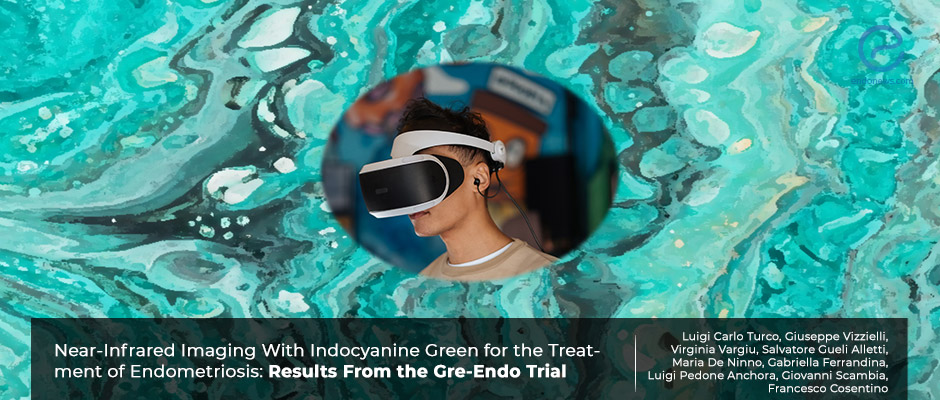Indocyanin Green dye for recognition of occult endometriotic lesions
Jan 13, 2022
Using near-infrared light combined with Indocyanine Green is superior to conventional white light laparoscopy for endometriotic foci visualization.
Key Points
Highlights:
- The study revealed higher specificity and sensitivity for near-infrared(NIR)-indocyanine green(ICG) application over white light(WL) laparoscopy for detection of occult endometriotic lesions.
Importance:
- The detection rate of invisible endometriosis lesions is higher when the NIR-ICG light is used, compared to conventional WL laparoscopy.
What's done here:
- This is a prospective study for comparing 51 patients between the ages of 18 to 47, first underwent conventional laparoscopy; then, after 5 min of intravenous ICG administration, all visualized under NIR light.
- Eighty-four patients were excluded (having endometrioma, tubal serosal endometriosis, being allergic to ICG, and earlier having laparotomic surgery).
- Surgical samples (n=240) from lesions seen only under WL, in NIR-ICG, in the combination of both were collected; all considered “suspect endometriosis” until pathology confirmation.
- Sensitivity, specificity, positive predictive value, negative predictive value, and overall accuracy were calculated by counting the WL gold standard method with an accuracy of 85% detection rate.
Key Results:
- Two hundred and seven (86.2%) lesions out of the overall 240 were visualized with WL imaging, and 200 were confirmed to be pathologic (true positive for WL).
- All lesions that were identified only with NIR-ICG [33/240 (13.75%), false negative for WL] were confirmed to be endometriosis.
- PPV of NIR-ICG is 98.5%, NPV is 87.1%, sensitivity 87%, and specificity of 98.5%, confirming that it is an excellent diagnostic and screening test.
Strengths and Limitations:
- The strengths are the single-center prospective design, application of the same procedure, and standardized surgery, dedicated surgeons, and pathologist.
- The limitations are the exclusion of adnexal endometriosis, a very high percentage (~89%) of advanced endometriosis that could represent a selection bias.
Lay Summary
The surgery for endometriosis is challenging and the resection of all lesions is not accurately related to not catching all lesions under white light (WL) conventional laparoscopy.
In the study conducted by Luigi Carlo Turco et al., in a tertiary endometriosis center, near-infrared (NIR) light was applied after intravenous indocyanine green (ICG) administration to evaluate whether this is a feasible method to be used to visualize occult endometriosis lesions.
Fifty-one patients have been included in the study after 84 were excluded because of having endometrioma, tubal serosal endometriosis, being allergic to ICG, or having an earlier laparotomic surgery. All patients were undergone conventional WL laparoscopy, and after 5 min of intravenous ICG administration, all were visualized under NIR light.
All sampled lesions were labeled as WL for the ones seen only under WL, only in NIR-ICG, or in the combination of both and when a lesion is seen with NIR-ICG and not in WL or, conversely, only with WL, it was named “suspect occult lesion” (s-OcL). Sensitivity, specificity, positive and negative predictive value, and overall accuracy were calculated by comparing the WL method as the gold standard, with an accuracy of 85% detection rate.
The authors' conclusion is "NIR-ICG allowed surgeons to remove occult lesions that otherwise would remain, leading to possible greater postoperative pain and a higher risk of persistence and relapse. However, further prospective studies that overcome the possible biases of this study are warranted to validate and confirm these results and permit diffusion of fluorescence-guided endometriosis surgery as a useful aid for a more effective and safe surgery".
Research Source: https://pubmed.ncbi.nlm.nih.gov/34868929
icg occult lesions diagnostic indocyanine green infrared sensitivity specificity advanced endometriosis

